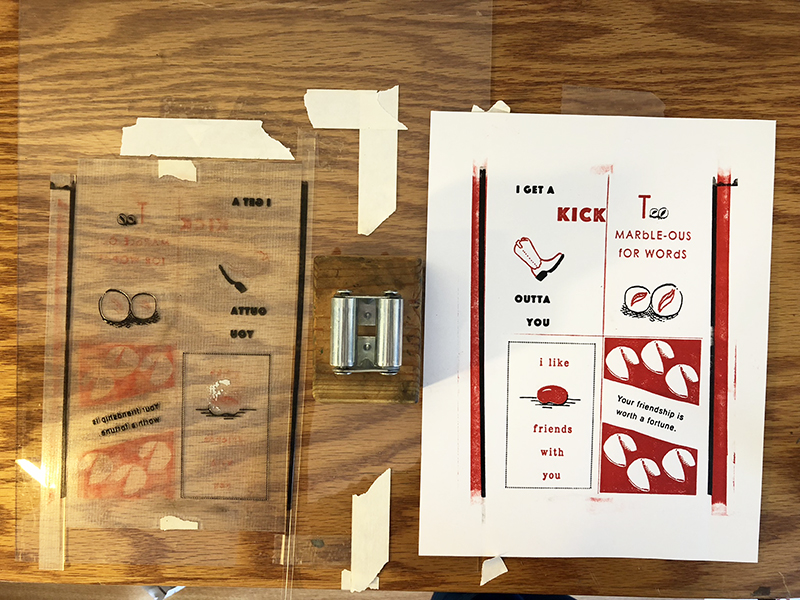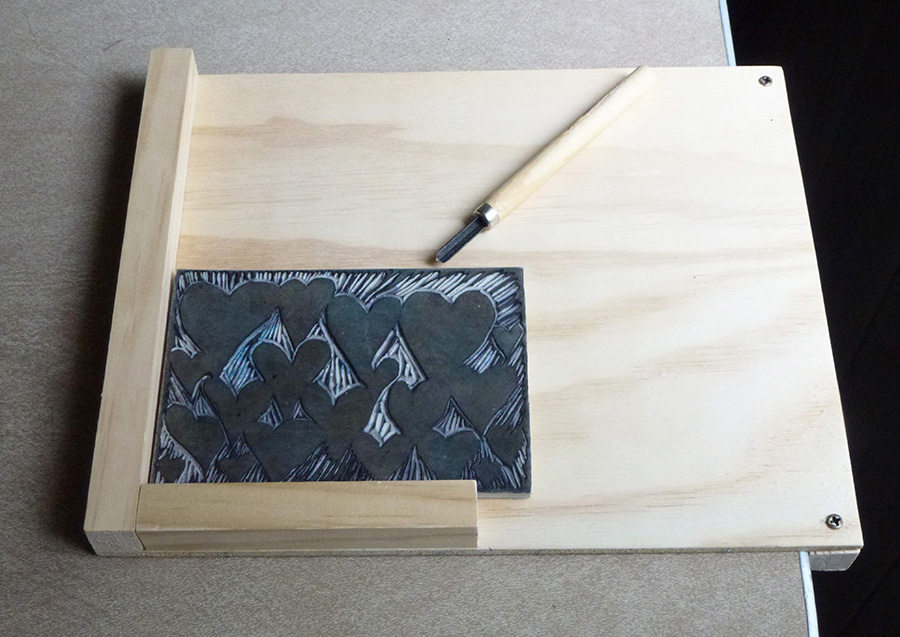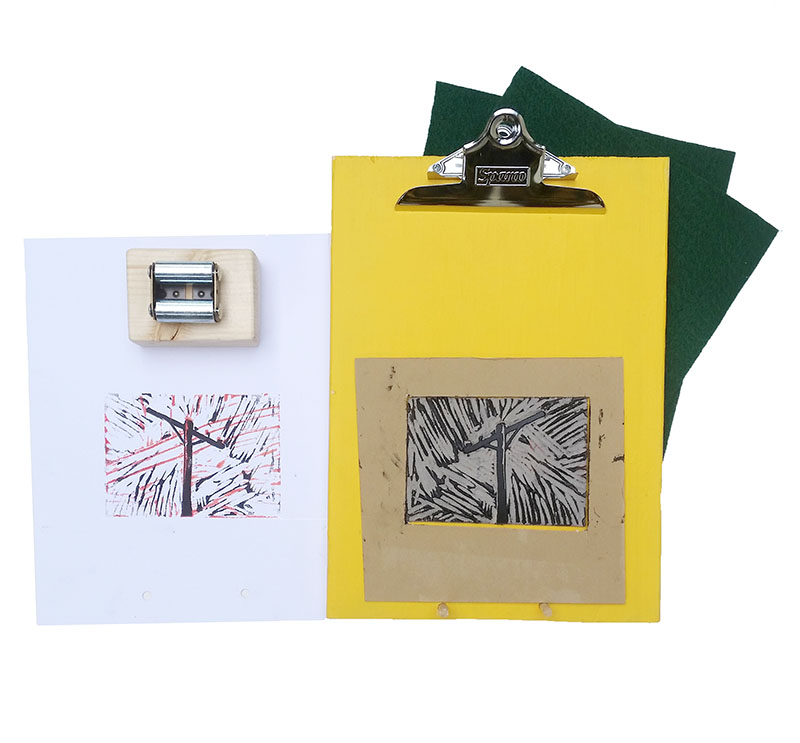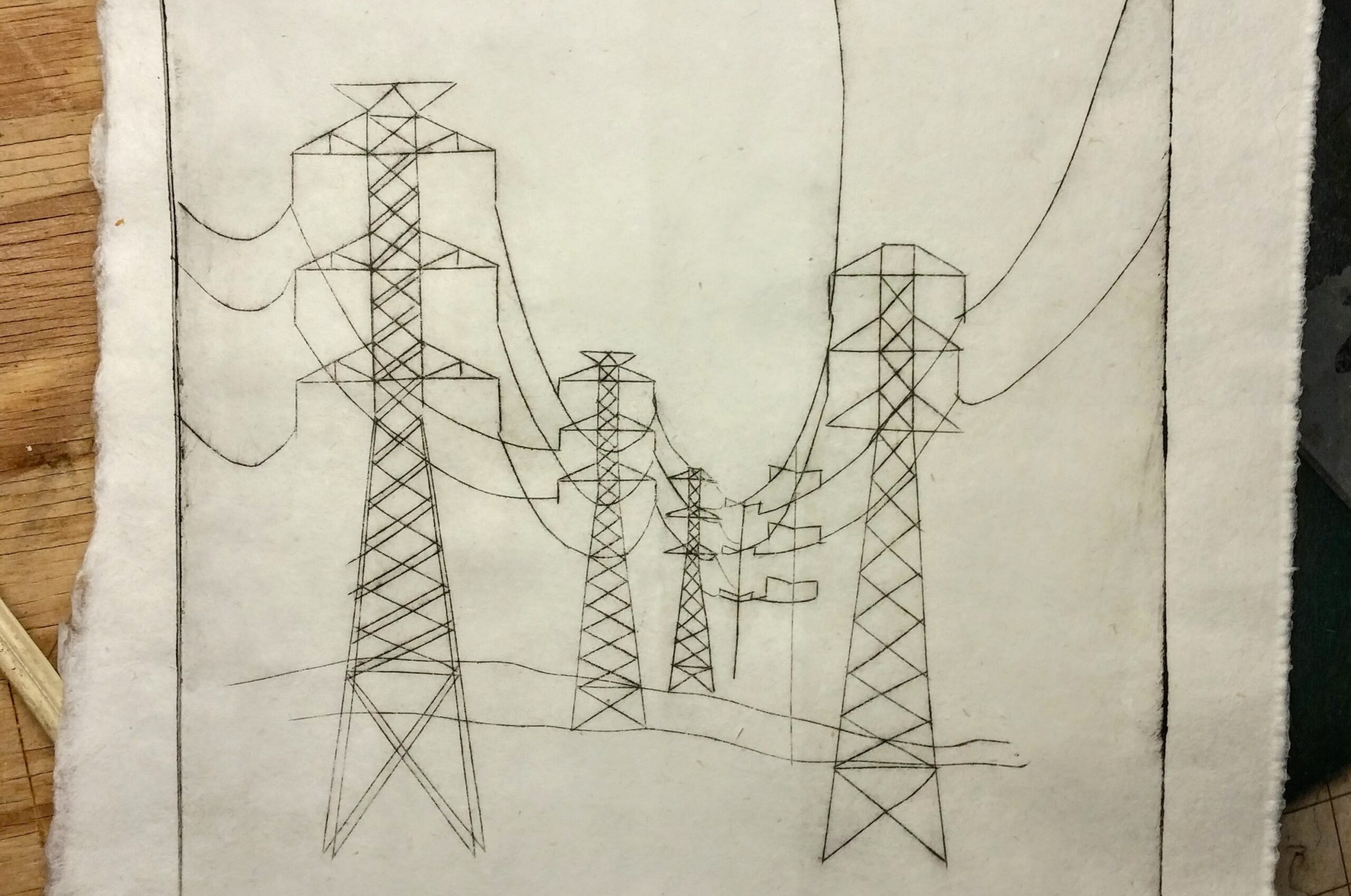Leaf printmaking is classic, but how do you get high definition prints? Inking your Leaf Substrate The trick is to roll the ink out thin, and use it before it dries. This can be tricky if you’re printing multiple leaves, or if it’s hot and dry when you’re printing. I…
Category: Uncategorized
Getting the Best Linocut Print with your Pocket Press
Letterpress Valentines with a Pocket Press
The Bench Hook
Printmaking Supplies Alternatives
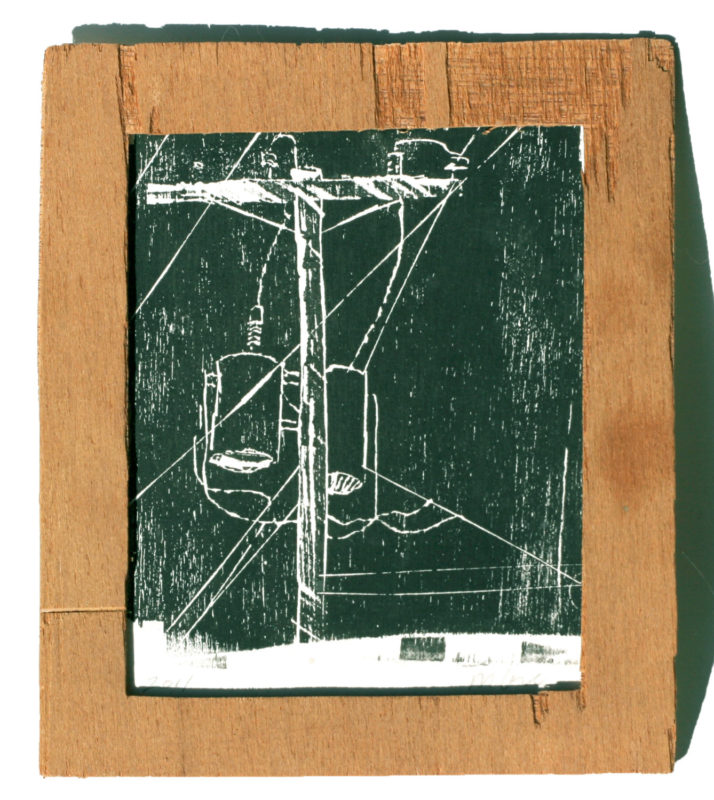
Everyday Printmaking Hacks A common printmaking misconception is that you need all the right tools to begin. You really don’t. Over the years I have found many substitutes for high dollar printmaking supplies. While I encourage the use of quality materials, particularly handmade paper, sometimes expense and availability can get…
Printmaking on Fabric
How to Press a Linocut with a Pocket Press
Big Printmaking at Home
How to Print Drypoint with a Palm Press and Akua Ink
Styrofoam Printmaking with Pocket Press

It presses etchings, but how about Styrofoam Printmaking? Artist/Printmaker Brad Schwartz wanted to know how my press works with styrofoam printmaking. I have been using this press for etchings, and an occasional small woodcut, so I had to try it out in order to answer his question. Using styrofoam plates is…


